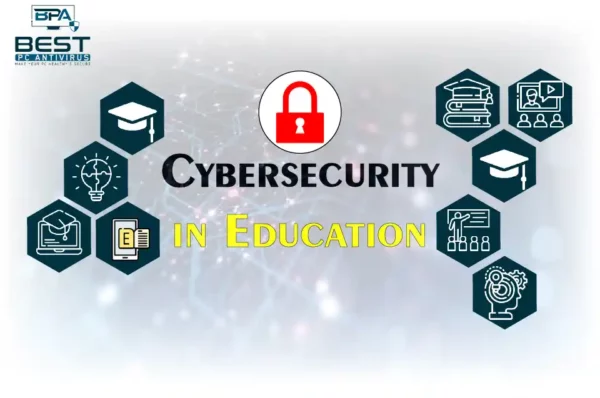Learn how cybercriminals steal funds from bank cards and how to protect yourself from such theft. This blog covers phishing scams, skimming, malware attacks, and social engineering techniques. Let’s learn exactly how to protect your personal and financial information and stay vigilant against cybercrime.
Cybercriminal’s Technique #1 Phishing Scams
Cybercriminals use phishing scams to steal funds from bank cards by tricking users into revealing their sensitive information, such as bank card numbers, PINs, and other credentials. Phishing is a type of social engineering attack where cybercriminals create fake websites or emails that appear legitimate and ask users to provide their personal and financial information.
In the case of stealing funds from bank cards, cybercriminals often create fake websites that mimic a legitimate bank or financial institution’s website. These fake websites typically look identical to the real ones, and they use the same logos, fonts, and colours. The cybercriminals then send out phishing emails to a large number of people, directing them to visit these fake websites and enter their personal and financial information.
Once the user enters their bank card information on the fake website, cybercriminals can then use that information to make unauthorised purchases or withdraw money from the user’s bank account. Additionally, cybercriminals can also use the stolen information to create a clone of the user’s bank card and use it for fraudulent activities.
To protect yourself from phishing scams, it’s essential to be cautious of emails or websites that ask for personal or financial information. Always verify the authenticity of a website or email by double-checking the URL and looking for any signs of inconsistency. Additionally, never click on suspicious links or download attachments from unknown senders. It’s also a good practice to use two-factor authentication and regularly monitor your bank account transactions for any unauthorised activities.
Cybercriminal’s Technique #2 Skimming
Skimming is a technique used by cybercriminals to steal credit or debit card information. It involves installing a device, known as a skimmer, on a legitimate card reader, such as an ATM or a gas pump. The skimmer is designed to capture the magnetic stripe data from the card, which can then be used to create a counterfeit card or conduct fraudulent transactions.
Here’s how cybercriminals use skimming to steal funds from bank cards:
Installation of Skimmers: Cybercriminals install skimmers on legitimate card readers, such as ATMs or gas pumps, that allow them to collect card information when the card is swiped.
Collection of Data: When a user swipes their card at the compromised reader, the skimmer records the card details, including the card number, expiration date, and CVV code.
Transfer of Data: The collected data is then transferred to the cybercriminals, who can use it to create a counterfeit card or conduct fraudulent transactions.
To protect yourself from Skimming, here are some tips:
Inspect the Card Reader: Before using a card reader, inspect it to see if it looks unusual or different from others. If you notice any signs of tampering or damage, avoid using it and report it to the merchant or financial institution.
Cover the Keypad: When entering your PIN, cover the keypad with your other hand or your body to prevent anyone from seeing your PIN.
Use Trusted Sources: Only use trusted ATMs and card readers, such as those located inside bank branches or established retailers.
Monitor Your Accounts: Regularly monitor your bank accounts for any unauthorised transactions, and report any suspicious activity to your bank immediately.
Use Contactless Payment: Consider using contactless payment methods, such as mobile payments or contactless cards, which don’t require the card to be swiped and are less susceptible to skimming attacks.
Cybercriminal’s Technique #3 Malware Attacks
Cybercriminals use malware to infect a victim’s device and gain access to their bank card information. They can use different types of malware, such as Trojans, keyloggers, or spyware, to steal sensitive data, including bank card numbers, PINs, and login credentials.
One common way cybercriminals use malware to steal funds from bank cards is by creating fake banking websites or apps that look similar to the real ones. They trick the victim into entering their bank card information and login credentials, which are then sent to the cybercriminals. They can then use this information to make unauthorized transactions or steal money from the victim’s account.
To protect yourself from Malware Attacks, it’s important to keep your device and software up to date with the latest security patches. You should also be cautious of clicking on links or downloading attachments from unknown or suspicious sources, as these can often contain malware. Installing a reputable antivirus or anti-malware software can also help detect and remove any potential threats on your device.
It’s also important to regularly monitor your bank account statements for any unauthorized transactions and report them to your bank immediately. Finally, be wary of unsolicited calls or emails requesting personal or financial information and never share this information with anyone unless you are absolutely sure of their identity and legitimacy.
Cybercriminal’s Technique #4 Malware Attacks
Cybercriminals use social engineering techniques to trick victims into revealing sensitive information that can be used to steal funds from bank cards. Here are some common social engineering techniques used by cybercriminals:
- Phishing: Cybercriminals send fraudulent emails or messages that appear to be from a legitimate source, such as a bank or credit card company. The email may ask the victim to click on a link to verify their account details, which then directs the victim to a fake website that looks like the legitimate one. Once the victim enters their account details, the cybercriminal can use this information to steal funds from the victim’s bank card.
- Vishing: Vishing is similar to phishing, but it involves phone calls rather than emails or messages. Cybercriminals pretend to be representatives from legitimate organisations, such as banks or credit card companies, and ask the victim for their account information. They may also use automated voice messages to trick the victim into calling a fake number and entering their account details.
- Pretexting: Cybercriminals create a fake scenario or pretext to gain the victim’s trust and obtain their personal information. For example, they may pretend to be a bank employee and ask the victim to confirm their account details for a security check.
To protect yourself from Social Engineering Attacks, you can:
- Be cautious of unsolicited emails, messages, or phone calls that ask for your personal or financial information.
- Verify the legitimacy of any communication by checking the sender’s email address or phone number and comparing it to the official website or phone number of the organization.
- Never click on links in unsolicited emails or messages.
- Use strong and unique passwords for all your accounts and enable two-factor authentication whenever possible.
- Educate yourself and your family about social engineering tactics and the risks associated with them.
Cybercriminal’s Technique #5 Card-Not-Present Fraud
Card-not-present (CNP) fraud is a type of payment card fraud that occurs when the card is not physically present at the point of sale. This type of fraud is becoming increasingly common due to the rise of e-commerce and other forms of online transactions. Cybercriminals use various methods to obtain card details and carry out CNP fraud, including phishing, malware, and social engineering.
One of the most common forms of CNP fraud is when cybercriminals use stolen card details to make fraudulent purchases online. This can be done by using the card details to create a new account or by using an existing account and changing the billing address to redirect the goods or services to another location.
Another way cybercriminals carry out CNP fraud is by using a technique known as “card-not-present skimming”. This involves intercepting the data transmitted between the customer and the merchant during an online transaction. Cybercriminals can use malware or phishing to install skimming software onto a customer’s device, which will then capture the customer’s card details when they are entered during an online purchase.
To protect yourself from card-not-present fraud, there are several things you can do:
- Keep your card information secure. Only provide your card information to trusted merchants and avoid sharing it online or over the phone unless you are certain it is secure.
- Regularly monitor your bank statements and credit reports for any unauthorised purchases or suspicious activity.
- Be wary of unsolicited emails, phone calls, or text messages asking for your personal or financial information. Cybercriminals often use social engineering tactics to trick people into giving up their information.
- Use a credit monitoring service to help detect fraudulent activity on your accounts.
FAQs
How do cybercriminals steal funds from bank cards using phishing scams?
Cybercriminals create fake websites or emails that appear legitimate and ask users to provide their personal and financial information, then use that information to make unauthorized purchases or withdraw money from the user’s bank account. To protect yourself, be cautious of emails or websites that ask for personal or financial information, verify the authenticity of a website or email, and use two-factor authentication.
How do cybercriminals use skimming to steal funds from bank cards?
Cybercriminals install skimmers on legitimate card readers, such as ATMs or gas pumps, to collect card information when the card is swiped, then transfer the data to the cybercriminals, who can use it to create a counterfeit card or conduct fraudulent transactions. To protect yourself, inspect the card reader before using it, cover the keypad when entering your PIN, only use trusted ATMs and card readers, and monitor your accounts regularly.
How do cybercriminals use malware attacks to steal funds from bank cards?
Cybercriminals infect a victim’s device with malware to steal sensitive data, such as bank card numbers, PINs, and login credentials, which they can use to make unauthorised transactions or steal money from the victim’s account. To protect yourself, keep your device and software up to date with the latest security patches, be cautious of clicking on links or downloading attachments from unknown or suspicious sources, install a reputable antivirus or anti-malware software, and monitor your bank account statements regularly.
What are some social engineering techniques used by cybercriminals to steal funds from bank cards?
Cybercriminals use phishing, vishing, and smishing to trick victims into revealing sensitive information, such as account details or login credentials, which they can use to steal funds from the victim’s bank card. To protect yourself, be wary of unsolicited calls or emails requesting personal or financial information and never share this information with anyone unless you are absolutely sure of their identity and legitimacy.
How can you protect yourself from cybercriminals stealing funds from your bank cards?
To protect yourself, be cautious of emails or websites that ask for personal or financial information, verify the authenticity of a website or email, use two-factor authentication, inspect the card reader before using it, cover the keypad when entering your PIN, only use trusted ATMs and card readers, monitor your accounts regularly, keep your device and software up to date with the latest security patches, be cautious of clicking on links or downloading attachments from unknown or suspicious sources, install a reputable antivirus or anti-malware software, and be wary of unsolicited calls or emails requesting personal or financial information.
Read More : What is Bing Search Engine? Bing Chatbot and how to use it?




